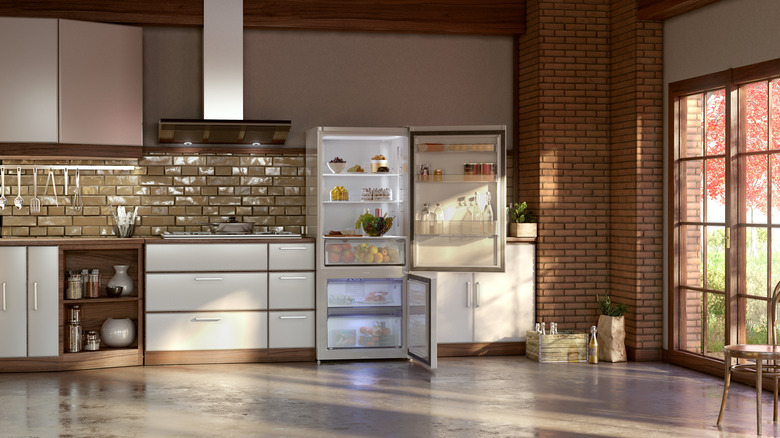What Causes Mold Behind Refrigerators?
Mold can grow behind the refrigerator as well as inside it, and the reason it happens is easy to understand. Most people like to push the refrigerator as close as possible to the back wall, which limits air circulation. The warmth generated by the compressor, coupled with typical kitchen humidity and the moisture created by the evaporative coils, creates ideal conditions for mold and mildew to grow. Black mold on the outside of a refrigerator isn't as big a problem as mold inside, but it's still serious, and you should do something about it.
Moisture Condensation on Evaporative Coils
Moisture Condensation on Evaporative Coils
A refrigerator has two sets of coils. The condenser coils, where the refrigerant is forced into the liquid state by the compressor, are warm because condensation is a process that releases heat. The evaporative coils, where the refrigerant vaporizes, are cool, though, because vaporization absorbs heat from the surroundings.
As Air-Specialty.com explains, water condensation from the surrounding air collects on the evaporative coils, and it has to go somewhere, so it usually falls into a drip pan underneath the appliance. From there, it evaporates again into the air behind the refrigerator, and it can collect on the wall or the refrigerator body. Wherever there's condensation, there's usually mold.
How to Prevent Mold Behind the Refrigerator
How to Prevent Mold Behind the Refrigerator
Perhaps the most important way to prevent mold from forming on the back of the refrigerator and wall is to remove the drip pan and empty it. You only need to do this once or twice a year under normal circumstances, but if your kitchen is particularly humid, you should do it more often.
It's also important to create space behind the refrigerator so air can circulate. Your refrigerator is too close to the wall if the coils are touching it. There should be a minimum clearance of at least 1 inch, but 2 inches is better, especially if the coils are recessed inside the unit. The space not only prevents mold from growing, but it also allows heat from the compressor to dissipate, thereby lengthening the life of the compressor and refrigerator.
How to Clean Mold
How to Clean Mold
Whether you see mold behind the refrigerator, behind the stove or black mold near the water heater, you clean it in the same way, and the proper cleaner doesn't have to include bleach. According to GE Appliances, bleach is corrosive and can damage your appliances. Instead, use a solution of detergent and water to scrub the mold away or, if you prefer, scrub off the mold with a solution consisting of 1 tablespoon of baking soda dissolved in a quart of water.
The baking soda solution is probably the best one for cleaning mold from the inside of your refrigerator as well, including the door gaskets and other rubber parts. Baking soda deodorizes as it disinfects. You can also use it straight from the box as a mild scouring agent to dig mold out of crevices in the door gasket and elsewhere that you find difficult to rub off with a rag or sponge.
